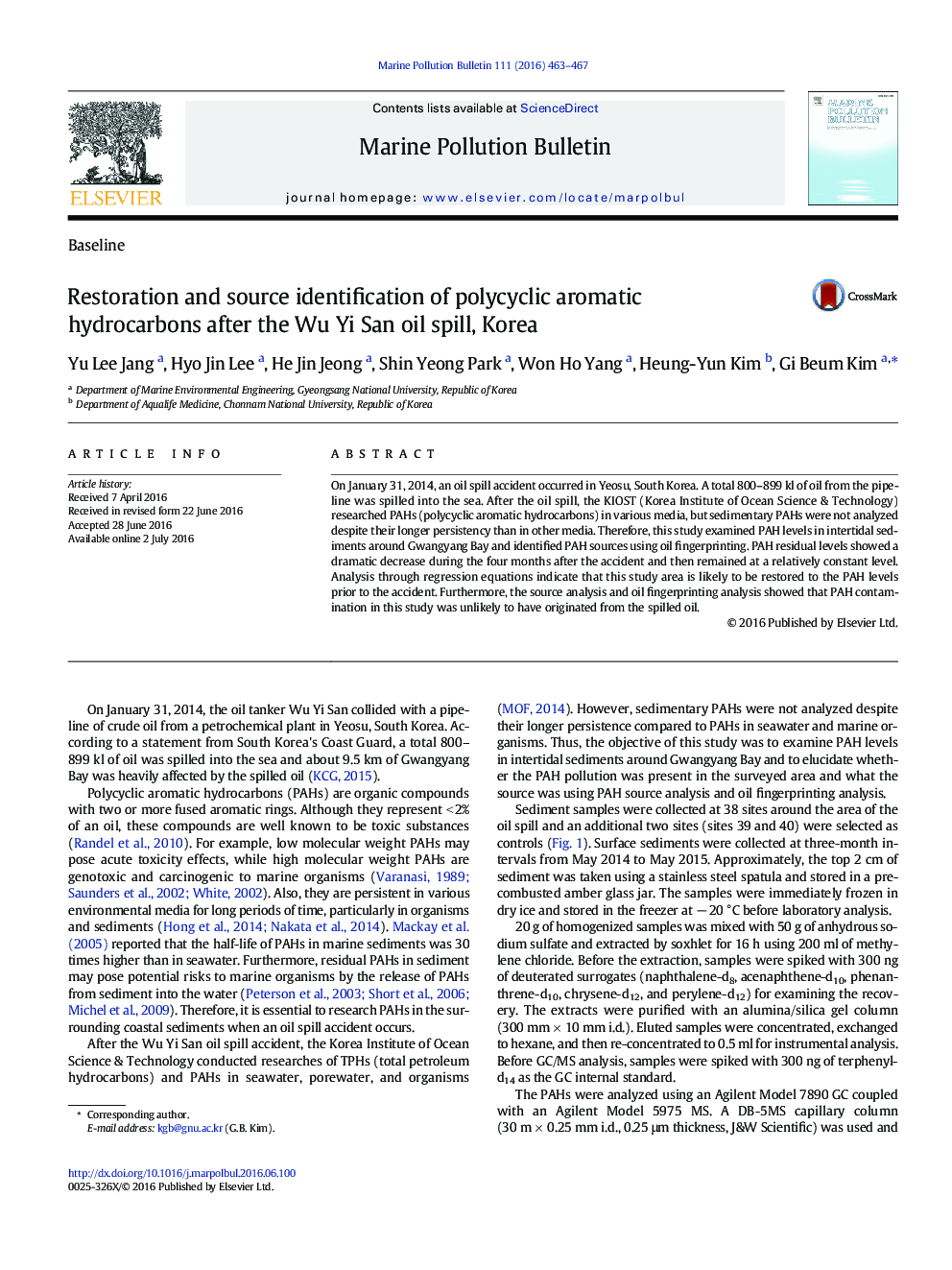| Article ID | Journal | Published Year | Pages | File Type |
|---|---|---|---|---|
| 4476336 | Marine Pollution Bulletin | 2016 | 5 Pages |
•Wu Yi San oil spill showed a dramatic decrease of PAH residual levels during the four months after the accidents.•Through the source and fingerprinting analysis, the contribution of the spilled oil to PAHs in sediment seemed to be low.•This study area was likely restored to PAH levels prior to the accident.
On January 31, 2014, an oil spill accident occurred in Yeosu, South Korea. A total 800–899 kl of oil from the pipeline was spilled into the sea. After the oil spill, the KIOST (Korea Institute of Ocean Science & Technology) researched PAHs (polycyclic aromatic hydrocarbons) in various media, but sedimentary PAHs were not analyzed despite their longer persistency than in other media. Therefore, this study examined PAH levels in intertidal sediments around Gwangyang Bay and identified PAH sources using oil fingerprinting. PAH residual levels showed a dramatic decrease during the four months after the accident and then remained at a relatively constant level. Analysis through regression equations indicate that this study area is likely to be restored to the PAH levels prior to the accident. Furthermore, the source analysis and oil fingerprinting analysis showed that PAH contamination in this study was unlikely to have originated from the spilled oil.
